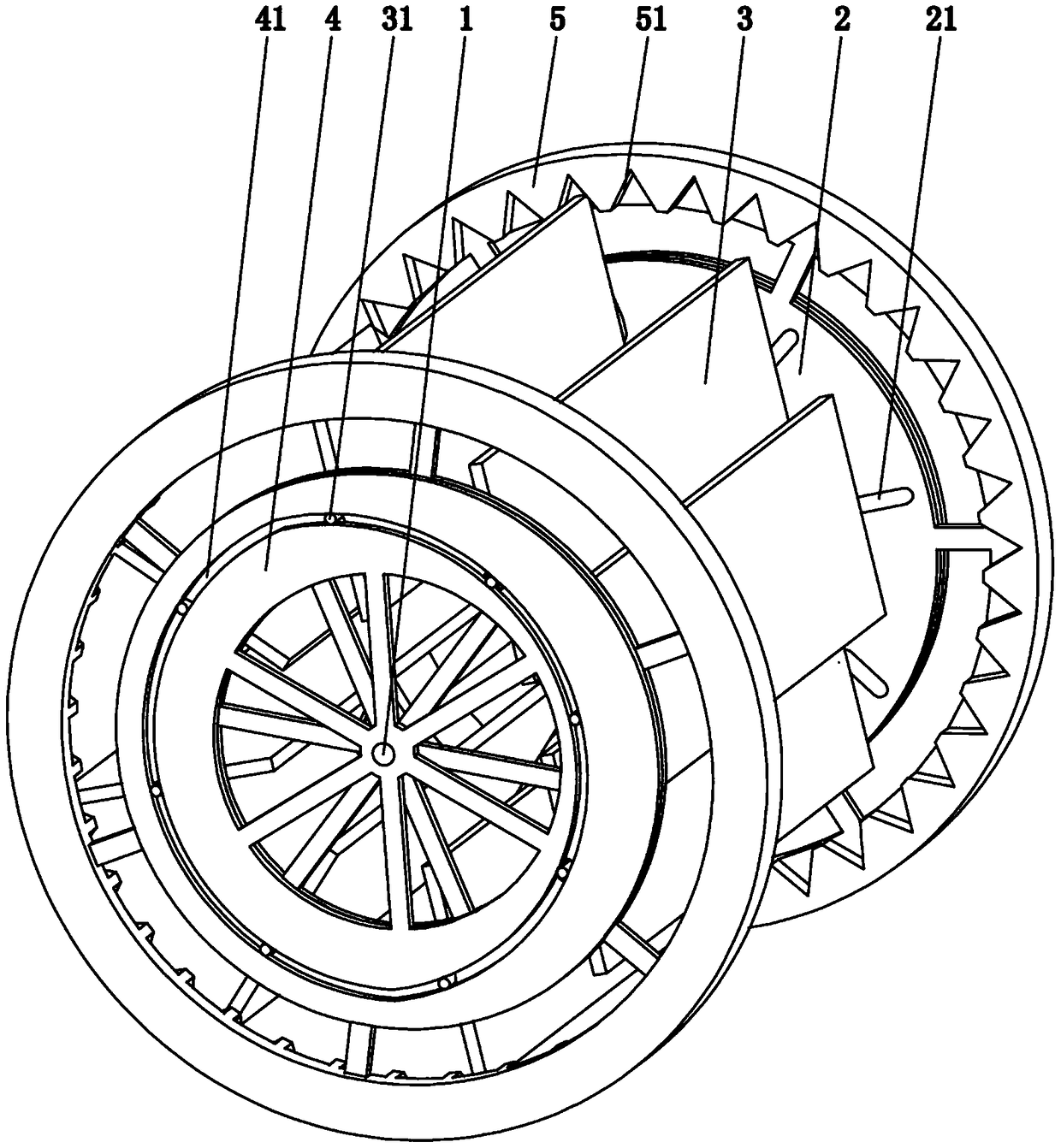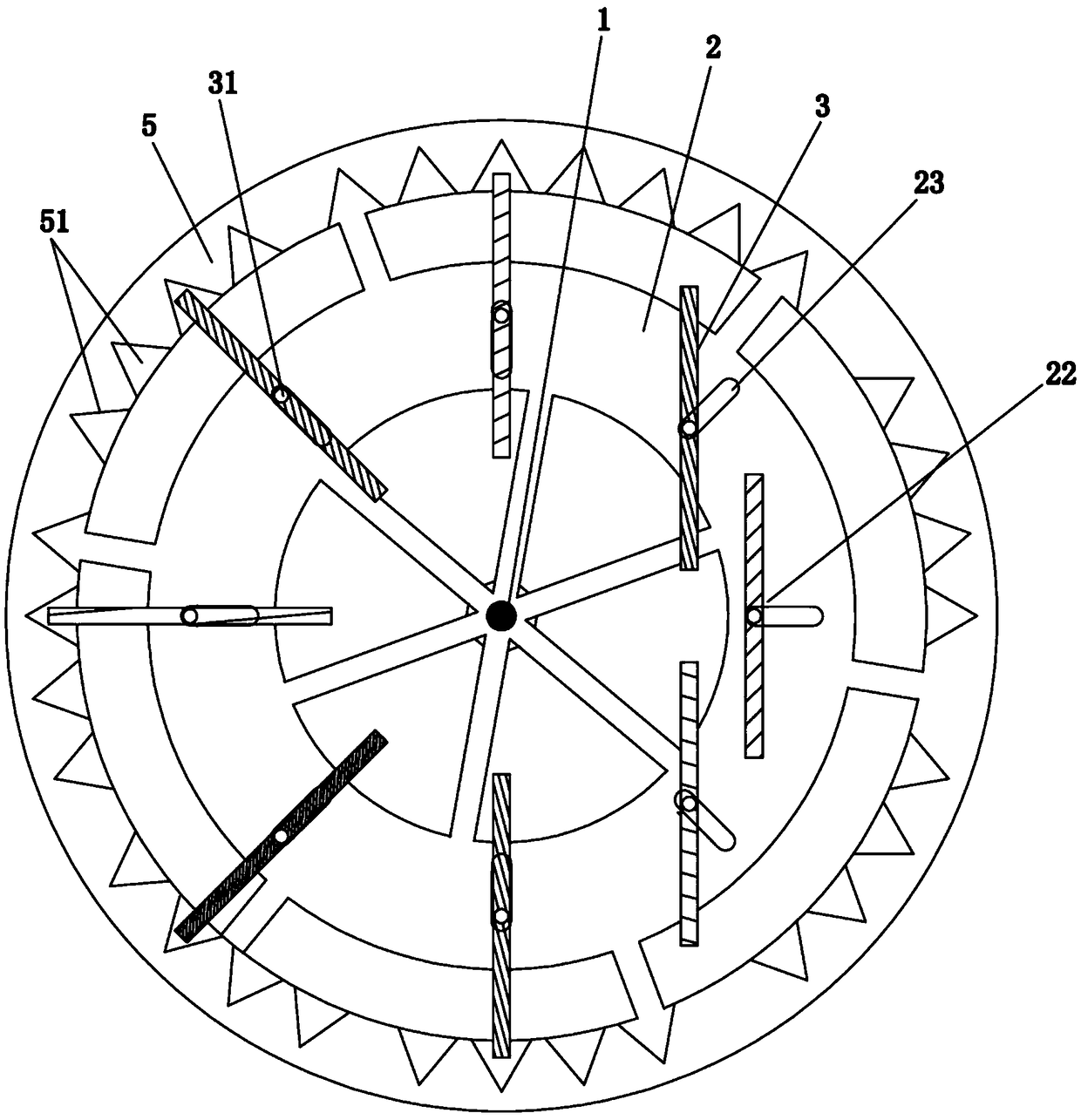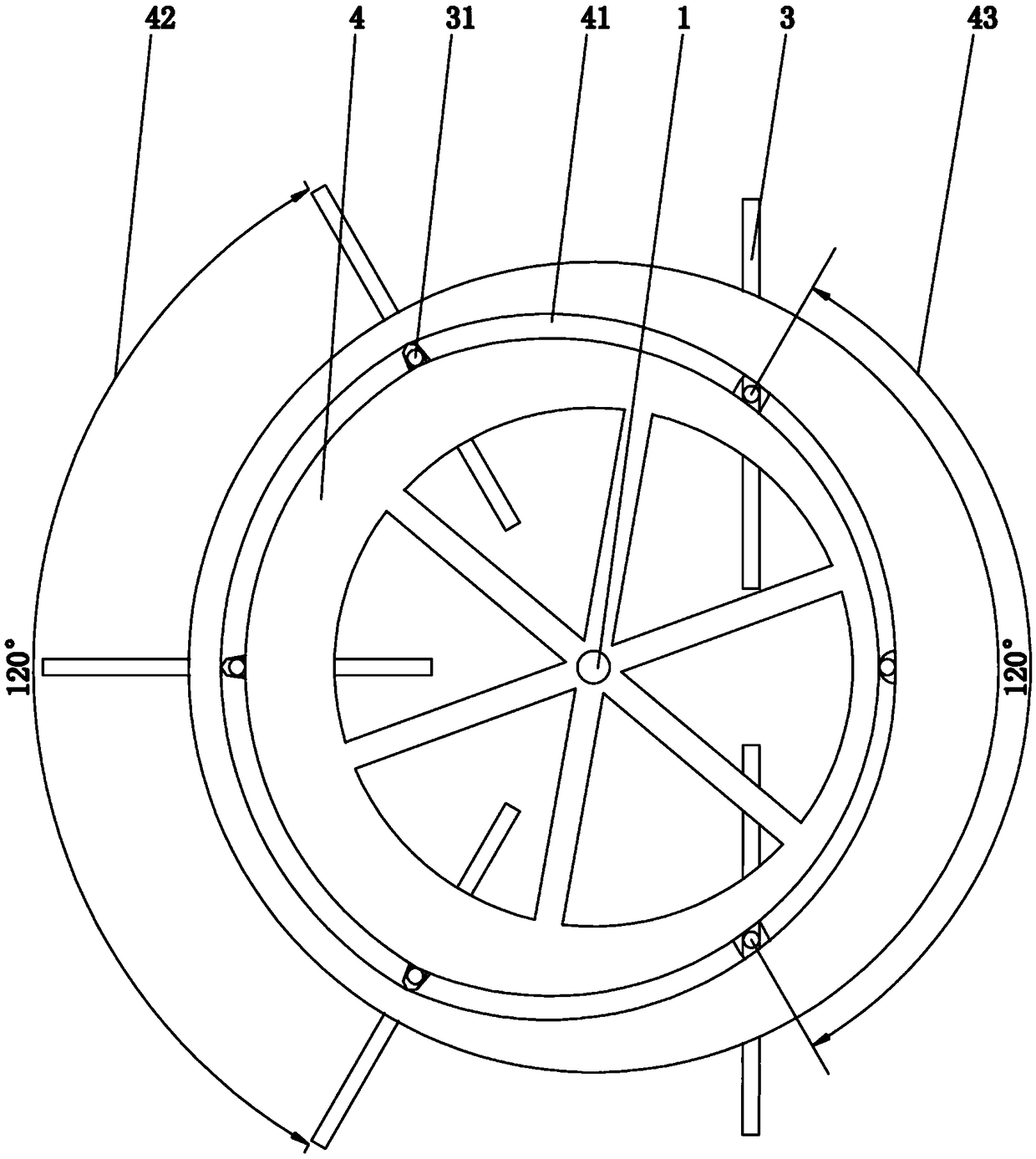A positively loaded wind or hydroelectric generator
A technology for hydroelectric generators and generators, which is applied to wind power generators, hydroelectric power generation, and wind power generators at right angles to the wind direction. It can solve the problems of generator complexity, complex structure, increased size and weight, etc., and reduce the difficulty of production. and production costs, increase the range of applications, increase the effect of power and torque
- Summary
- Abstract
- Description
- Claims
- Application Information
AI Technical Summary
Problems solved by technology
Method used
Image
Examples
Embodiment 1
[0023] Embodiment 1, in a large-scale unit, it is necessary to use a blade 3 with a larger area to push, preferably a mandatory limit ring 5 is provided on the outer periphery of the support plate 2, and a number of blades are arranged on the inner edge of the mandatory limit ring 5. 3. Cooperating meshing teeth 51; the tooth height of said meshing teeth 51 is H, then H≤(D1-D2) / 2. Its main principle is the same as above, the difference is that when the blade 3 revolves to the free part 43 of the track plate 4 (ie the small-diameter circle part of the guide groove 41), the outer edge of the blade 3 breaks away from the restriction of the mandatory limit ring 5, so that The shaft 31 can rotate in the adapter hole 21; when the blade 3 revolves to the working area of the work part 42 of the track plate 4 (that is, the large-diameter circle part of the guide groove 41), it is limited by the guide groove 41. The sub-shaft 31 of the sub-shaft 31 meshes with the revolving part 22 on...
Embodiment 2
[0030] Embodiment 2, 4 groups of 8 blades 3 are arranged between the support plates 2, under the action of external wind force, one of the first group of blades 3 is located at 270°, at this point the track plate 4 pushes the blades 3 together with the sub-shaft 31 to At the position of the working part 42 (the far axis, that is, the great circle of the track plate 4), the tapered section of the factor shaft 31 enters the tapered groove of the support plate 2, which limits the rotation of the blade 3, and the front of the blade 3 is completely vertically affected by the external force. 3 When facing the wind or facing the water flow, there is no angle between the blade 3 and the external force, 100% of the external force is converted into torque to do work, and there is no energy waste. It can only revolve around the main shaft 1. The torque generated at this point is the largest. The other blade 3 of the same group is in the opposite 90° position. Due to the small circle of th...
Embodiment 3
[0031]Embodiment 3, when the main shaft 1 is placed horizontally, when the blade 3 rotates to the working part 42, due to the effect of gravity, the blade 3 can automatically fall into the mandatory limit ring 5, when the blade 3 rotates out of the working part, the gravity Under the action of the action, the blade 3 breaks away from the mandatory limit ring 5. Therefore, when the device is placed horizontally, the track plate 4 can be eliminated, further saving installation and manufacturing costs.
PUM
 Login to View More
Login to View More Abstract
Description
Claims
Application Information
 Login to View More
Login to View More - R&D
- Intellectual Property
- Life Sciences
- Materials
- Tech Scout
- Unparalleled Data Quality
- Higher Quality Content
- 60% Fewer Hallucinations
Browse by: Latest US Patents, China's latest patents, Technical Efficacy Thesaurus, Application Domain, Technology Topic, Popular Technical Reports.
© 2025 PatSnap. All rights reserved.Legal|Privacy policy|Modern Slavery Act Transparency Statement|Sitemap|About US| Contact US: help@patsnap.com



